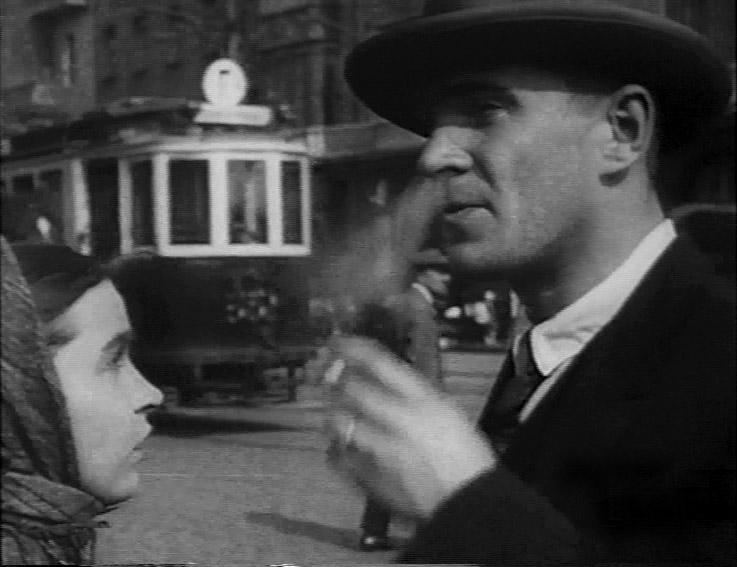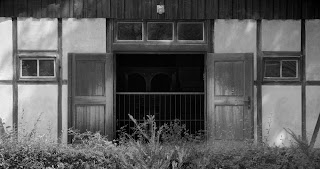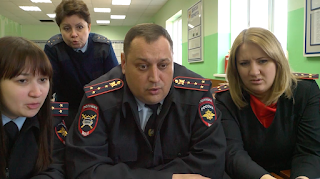This evening in London at Pushkin House - May 14th - there will be a unique opportunity to see Tatiana Daniliyants' extraordinary film about Yerevan through the eyes of six of the city's most accomplished musicians. An occasion not to be missed. As I tried to argue in an article for Desist Film (in September 2017) the film represents a rare strand of documentary in Russian film. A city glance with a lightness of touch that both Khutsiev and Danelija (now both recently departed) had but few have held since. Hoping that people in London will take the opportunity to go to see this film.
Amongst Russian documentary filmmakers there is arguably only one, Tatiana Daniliyants, who restores a vivid and lucid anthropological glance on the city. Not the city of Moscow (although a very early, and very rarely shown, film of hers ‘U’ did feature that city) but ‘southern cities’. If Venice was pictured through the labour of its artisans and craftsmen in her Venice Afloat, then Yerevan comes alive through music or, more precisely, through musicians (one of whom with a certain amount of irony, given Armenia’s landlocked status, named his band The Armenian Naval Orchestra). This symbiosis captured between a city and the labour or the voice of its inhabitants means that Daniliyants’ films are not city films in the conventional sense of the city symphony film but a film about the lived in and the living, breathing city. This is something rather unusual in Russian documentaries which, more often than not, demonstrate a preference for either individual portraits, taut psychological explorations of inner worlds, or will explore a milieu without linking them to any wider sense of the topography of this milieu. Private, inner spaces are all too rarely opened up into broader civic spaces. Fortunately, Tatiana Daniliyants represents a noble exception by rescuing the viewer from that claustrophobia of these rigid psychological portraits and instead placing her protagonists very much within the cityscape.
Danilyants’ latest film – Six Musicians and a City- is an exceptionally successful representation of place. Not place alone, but place and destiny, place and history as some extraordinary chronical footage demonstrates. Central to the film is the image of a city recovering, overcoming the trauma of earthquakes, wars, blockades and near famine of the late 1980s and early 1990s (as well as the genocide of a century ago). A film dedicated to physical survival and the survival of voices, the endurance of history and culture. Moreover, the city is present in many guises: the centre and the periphery, the city as memory, the city as architectural and cultural history, the city as nature, the city as coincidental meeting place, the city as fleeting impressions as well as its bar and club life, the city as one imbued simultaneously with nostalgia and a forward-looking drive. All this is the backdrop to the six musicians ‘tour’ of Yerevan. For a documentary filmmaker choosing six protagonists could well be a risky strategy but here it is a winning strategy precisely because of their diverse ways of illuminating the city and how they are themselves reflected in the topography.
The six musicians come from different generations, have different musical styles and reveal different Yerevans. So, for example, Arto Tuncboyaciyan the avantgarde folk musician and leader of the ‘Armenian Navy Band’ reveals to the viewer his origins as an Armenian singer in Turkey and the influence that growing up there had on his music. Though his links to the city and even to the Armenian language are more tenuous than others, he, interestingly, reveals most powerfully a sense of what the survival of Armenian culture meant in adverse situations. Indeed, the very concept behind the naming of his band along with his explanations of his music as an outlet of his situation in the exclusionary reality of Turkey places his music as an articulation of the universal moment of Armenian culture. Which is not to say that the other musicians were any less international. Malkhas, a jazz player and festival organiser and a wonderful racconteur, along with Forsh, a bard and a composer both ‘made it’ internationally (whether in the United States or Argentina), revealing the ease with which Armenian culture travels internationally and, given their return to their native land and contribution to Yerevan, this hints at how the role of the emigrant in Armenian culture seems less dramatic than that of one in, say, Russian culture. The duduk player, Jivan Gaspariyan, also an international traveller with his music, represents perhaps the most traditionalist musician and holds the most nostalgic glance on the city. Yet he, even with his memories of the city (imbued as they are with a melancholic nostalgia for a smaller, bygone Yerevan) does not dismiss the contemporary, larger Yerevan. One of the most extraordinary portraits is of the bard Lilith Pipoyan who finds inspiration in many different eras of Armenian musical and poetic history and illuminates not just those times but also presents us both the Soviet and the peripheral Yerevan alongside a Yerevan based in its milennial history. Grandiose Soviet distilleries appear alongside the ancient Yerevan fortress while then later being shown peripheral Yerevan’s Constructivist buildings. It is the youngest musician, Michael Voskanyan, an ethno-jazz musician playing the ‘Tar’ instrument, who represents the youngest generation of musicians. Interestingly his choosen spaces are the least ‘city-like’ of all: Voskanyan finds shelter in those green, natural spaces still present in Yerevan.
While all epochs of Armenian history are represented here, it is the trauma of the late eighties and early nineties which plays a central role in the film. Through different generational perspectives (those who lived through it as adults and those only recently born at the time) as well as through different optics – at times tragic, mournful backdrops which are also sometimes lightened with romantic anecdotal memories such as Malkash’s tale of his traipse through Yerevan on a gloomy and murky early winter morning to be greeted with a rumka of vodka at the currency exchange kiosk. Each account of the nineties – that ‘lost time’ for Armenia – is accompanied by found footage of the time (and this is one of those extra layers of the film that makes it such a rich and rewarding viewing experience), contrasting it with contemporary Yerevan shown in all its splendour, managing to avoid glamour but clearly demonstrating a love for its aesthetic beauty. Notes of criticism or a restrained sadness about Yerevan’s transformation are heard – Malkash’s story of the transformation of the Kopeechka bar into Martini as well as Jivan Gasparyan’s comment that Yerevan has become more a city of businessmen than of artists: though this is not a film that dismisses the transformation. Far from it, as scenes later in the film show, for example, we are impressed by Malkash’s stories about his own contribution to a recent cultural renaissance in the Yerevan jazz scene and the touching scene of Gasparyan walking around the city with his son.
Tatiana Daniliyants’ extraordinary film is witness to the
individuality of her gaze in the Russian documentary scene. A conglomeration of
geographical influences: she is of Armenian
descent but then has been connected for many years with Venice, her childhood
was spent in Algeria and she has often worked alongside Polish cinematic
maitres. All this may partially account for this opening up of cityscapes, and
her unique ability to re-explore the civic without the more rigid psychological
tautness that accompanies much of the ‘Russian school of documentary
filmmaking’. The film is as such a
testament, too, to the vibrancy of Armenian culture (it is, indeed, such an
indelible presence in Russian culture, too, one can roll off the names of Valery
Brusov, Andrey Bely, Osip Mandelstham, Vassily Grossman and Andrey Bitov as an
indicator of how much Armenia has meant to Russian cultural figures). Indeed,
for Daniliyants, one could argue that the conduit (her own ‘naval ship’ if we
are to think of Arto Tuncboyaciyan’s prescient and pregnant metaphor) was that
truly monumental Armenian figure of Soviet cinema, Sergo Parajanov whose visit
to Venice was the subject of an extraordinary recent exhibition of Daniliyants’
art work and of a small film of hers. The Parajanov whose photo hangs along
with those of that extraordinary actor Frunzik Mkurtichyan and others in the Martini bar appearing at the beginning
of the film- part of that great conglomeration of Armenian artistic figures who
at the beginning of the film are the subject of Malkash’s recollections and
nostalgia. Let’s hope that Moscow will get this treatment some day (whether in
documentary or in feature films): a city glance with a lightness of touch
rarely seen since the 1960s and, coincidentally, it was southerners back then, like those great recently departed Marlen Khutsiev and Georgij Danelija who managed
this in such memorable films as Walking
the Streets of Moscow, Ilich gate and July
Rain.






































